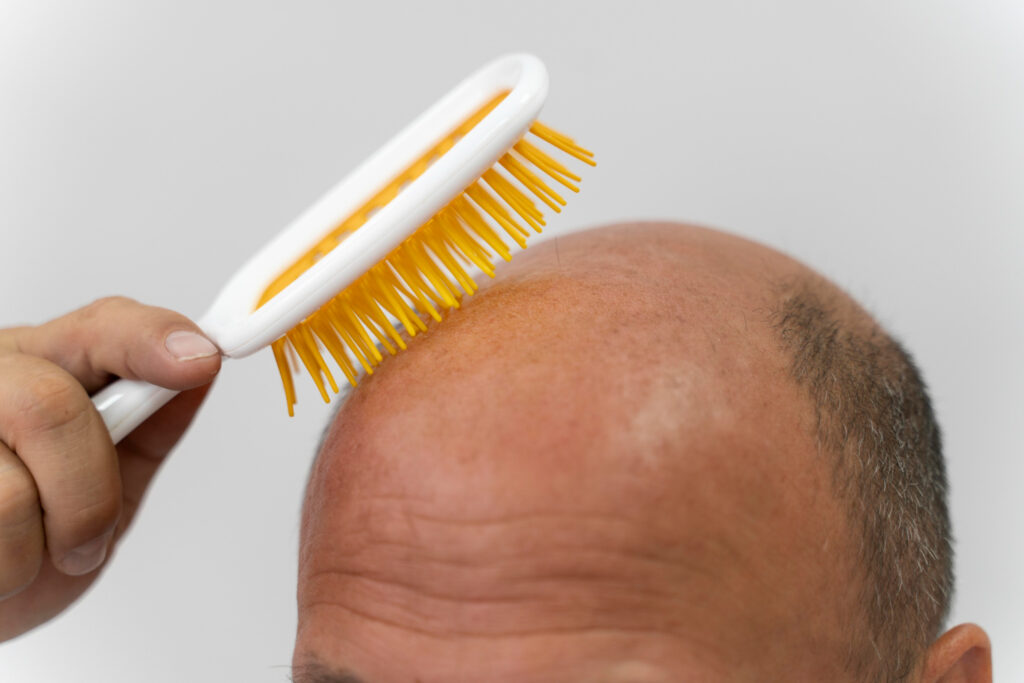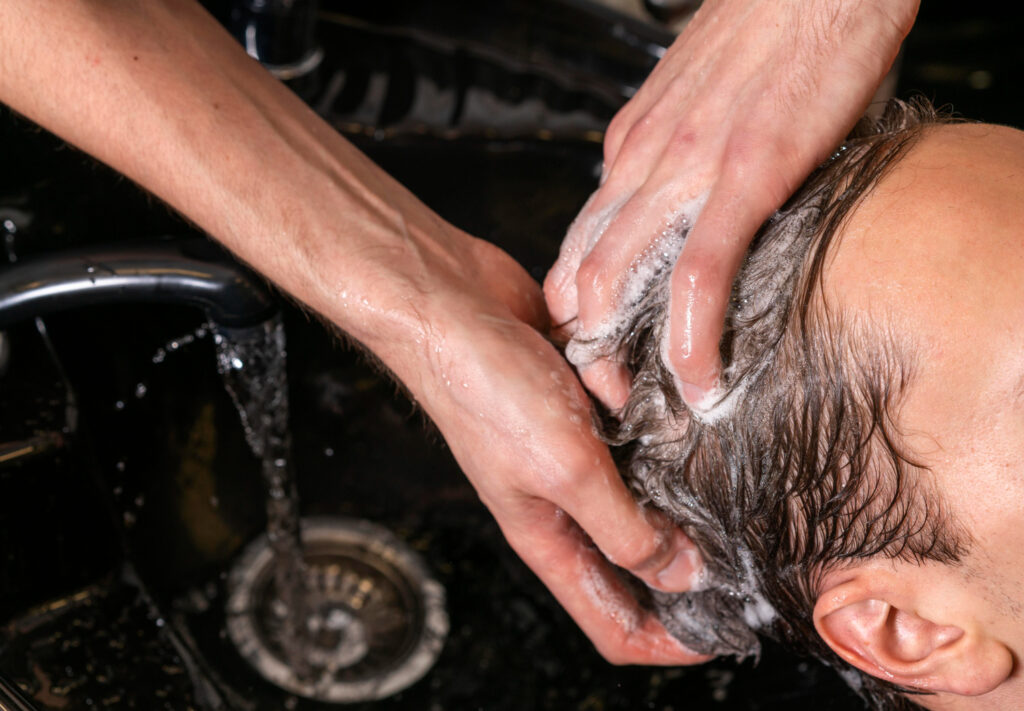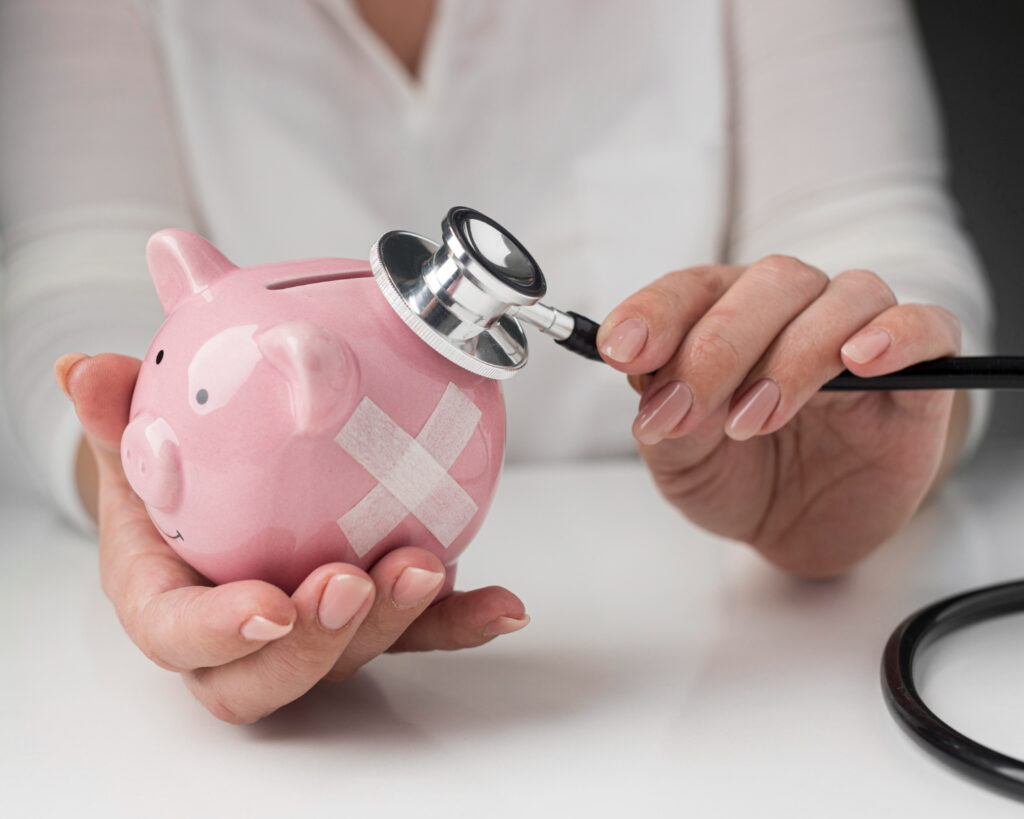If you’re among the millions of men noticing more hair in your shower drain or a gradually receding hairline, you’ve probably gone down the internet rabbit hole searching for answers. Among the sea of conflicting advice, one question seems to pop up repeatedly: “Am I washing my hair too often—or not enough?”
It’s a legitimate concern. After all, your washing habits are something you can actually control, unlike your genetics or age. But does shampooing frequency really make a difference when it comes to hair thinning? Let’s separate fact from fiction and get to the root of the matter.
The Great Debate: Daily Washing vs. Minimal Washing
Walk into any barbershop or browse any men’s grooming forum, and you’ll find passionate advocates on both sides of the hair washing frequency debate.
Team Daily Wash argues that regular cleansing removes buildup that could potentially clog follicles and inhibit healthy growth. Their mantra: “Clean scalp, healthy hair.”
Team Minimal Wash counters that over-washing strips away natural oils (sebum) that protect and nourish your hair and scalp. Their philosophy: “Let your scalp’s natural balance work its magic.”
So who’s right? As with most things in life, the truth lies somewhere in the middle—and depends largely on your individual circumstances.
Understanding Your Scalp’s Natural Balance
Before we dive into ideal washing frequencies, it helps to understand what’s happening up there on your scalp.
Your skin naturally produces an oil called sebum, which helps protect and moisturize both your scalp and hair. This production is regulated by sebaceous glands attached to each hair follicle. These tiny glands respond to various factors including hormones, environment, and yes—how often you wash.
When you shampoo, you remove this sebum along with dirt, product buildup, and dead skin cells. This is generally a good thing—except when it’s not.
How Over-Washing Can Impact Your Hair
Josh, a 34-year-old marketing executive from Seattle, had been washing his hair every single morning for years. “I always thought more cleaning meant healthier hair,” he explains. “But my scalp was often dry and itchy, and I started noticing more hairs in my drain. It wasn’t until my barber suggested I might be over-washing that I considered changing my routine.”
When you wash too frequently, especially with harsh shampoos, you can create several unintended consequences:
- Sebum Overproduction: Your scalp may compensate for the constant stripping by producing even more oil, creating a frustrating cycle.
- Scalp Irritation: Frequent exposure to detergents can irritate your scalp, potentially leading to inflammation around hair follicles.
- Mechanical Stress: The physical act of washing, especially vigorous scrubbing and rough drying, can stress hair that’s already vulnerable to shedding.
- Dryness and Breakage: Without some natural oils, hair shafts become more brittle and prone to breakage, which can give the appearance of thinning even if it’s not true hair loss.
When Under-Washing Becomes Problematic
On the flip side, washing too infrequently comes with its own set of issues.
Miguel, a 42-year-old teacher who tried the “no-poo” method (avoiding shampoo entirely), shares his experience: “I thought I was doing something good for my hair by letting it ‘self-clean.’ But after a few weeks, my scalp became incredibly itchy, and I developed what my doctor later told me was seborrheic dermatitis.”
Insufficient washing can lead to:
- Excessive Buildup: Dead skin cells, excess sebum, and product residue can accumulate, potentially blocking hair follicles.
- Scalp Conditions: The environment created by buildup can exacerbate or trigger scalp conditions like dandruff or seborrheic dermatitis.
- Bacterial Growth: Unwashed scalps become breeding grounds for microorganisms that could potentially impact follicle health.
- Weakened Hair Roots: Some experts suggest that heavy buildup around follicles may eventually weaken hair at the root, making it more prone to falling out.
Finding Your Personal Sweet Spot
So what’s the magic number? How often should you be lathering up? The answer varies based on several personal factors:
1. Your Scalp’s Oil Production
• Oilier scalps generally benefit from more frequent washing—every day or every other day may be appropriate. • Drier scalps often do better with less frequent washing—perhaps twice a week.
2. Your Activity Level
• Heavy exercisers who sweat regularly may need to wash more frequently to remove salt and sweat buildup. • Less active individuals can often extend time between washes without issues.
3. Your Environment
• Urban dwellers exposed to more pollution may need more frequent cleansing. • Those in cleaner environments might get away with washing less often.
4. Your Hair Type and Texture
• Fine hair tends to show oil more quickly and may look better with more frequent washing. • Coarser hair can often go longer between washes without appearing greasy.
Signs You’re Washing at the Right Frequency
How do you know if you’ve found your ideal routine? Look for these indicators:
• Your scalp doesn’t feel itchy or irritated • You don’t notice excessive oiliness or extreme dryness • Your hair looks and feels clean and manageable for at least a day after washing • You’re not seeing increased shedding after adjusting your routine
Practical Tips for a Healthy Washing Routine
Regardless of how often you choose to wash, these practices can help maintain scalp health:
1. Choose Gentler Products
Look for sulfate-free shampoos that clean without harsh detergents. These might not lather as dramatically as conventional shampoos, but they’re typically less stripping.
2. Focus on Scalp Health
When you shampoo, focus on cleansing your scalp rather than the hair itself. Use fingertips (not nails) to gently massage the product into your scalp.
3. Adjust Seasonally
Many men find they need to wash more frequently in summer when heat and humidity increase sweat and oil production, and less often in winter when the air is drier.
4. Consider Occasional Scalp Exfoliation
Just as exfoliation benefits facial skin, removing dead skin cells from your scalp can help maintain healthy follicles. This doesn’t mean harsh scrubbing—look for gentle exfoliating products specifically designed for scalp use.
5. Rinse Thoroughly
Product residue can be as problematic as natural buildup. Take extra time to ensure you’ve rinsed all shampoo and conditioner completely from your hair and scalp.
6. Try Alternating Products
Some men find that alternating between different types of shampoos—perhaps using a deep-cleaning formula once a week and a gentler option for regular washes—helps maintain balance.
7. Pay Attention to Water Temperature
Very hot water can strip oils more aggressively and potentially irritate your scalp. Lukewarm water is generally a better choice for hair washing.
A Personal Experiment Worth Trying
If you’re concerned about hair thinning and suspect your washing routine might be a factor, try this two-month experiment:
Month One: Gradually adjust your washing frequency. If you currently wash daily, try every other day. If you’re already at every other day, try twice a week. Give your scalp time to adjust to the new routine before making judgments.
Month Two: Once your scalp has adjusted, take note of how your hair and scalp feel, as well as any changes in shedding. Take weekly photos in the same lighting to track any visible differences.
Eric, a 39-year-old from Chicago, tried this approach: “I went from washing every day to every third day, and after the initial adjustment period where my scalp felt a bit oilier than usual, things balanced out. Six months later, I actually notice less shedding than before.”
Beyond Washing: Other Factors That Matter More
While washing habits can certainly impact scalp health, it’s important to maintain perspective. For most men experiencing pattern hair thinning, washing frequency is just one small piece of a much larger puzzle.
Factors that typically have more significant impact include:
• Genetics: Still the primary determinant of pattern hair thinning • Hormonal factors: Particularly DHT (dihydrotestosterone) sensitivity • Overall health: Including nutrition, stress levels, and sleep quality • Age: Natural changes in hair density occur over time
This doesn’t mean you should ignore your washing routine—optimizing scalp health is still valuable—but it does mean you shouldn’t expect dramatic reversal of genetic hair thinning simply by changing how often you shampoo.
The ideal hair washing frequency isn’t one-size-fits-all. It’s a personal decision that depends on your unique scalp, hair type, lifestyle, and environment. What works perfectly for your friend or colleague might be completely wrong for you.
Rather than following rigid rules, pay attention to how your scalp and hair respond to different routines. The right frequency is the one that leaves your scalp feeling comfortable—neither itchy and dry nor excessively oily—while minimizing unnecessary stress on your hair.
Remember that moderation is usually the wisest approach. Most men find their sweet spot somewhere between daily washing and once-a-week cleansing. Finding your personal balance might take some experimentation, but your scalp will thank you for the effort.

Disclaimer: This article is intended for informational purposes only and should not be considered medical advice. Hair thinning can have many causes, and a healthcare provider or dermatologist should be consulted for proper evaluation and personalized recommendations. The information provided here is based on general knowledge about hair and scalp health and should not replace professional medical consultation.
Sources:
- American Academy of Dermatology
- International Society of Hair Restoration Surgery
- Journal of Investigative Dermatology
- Cleveland Clinic Department of Dermatology



